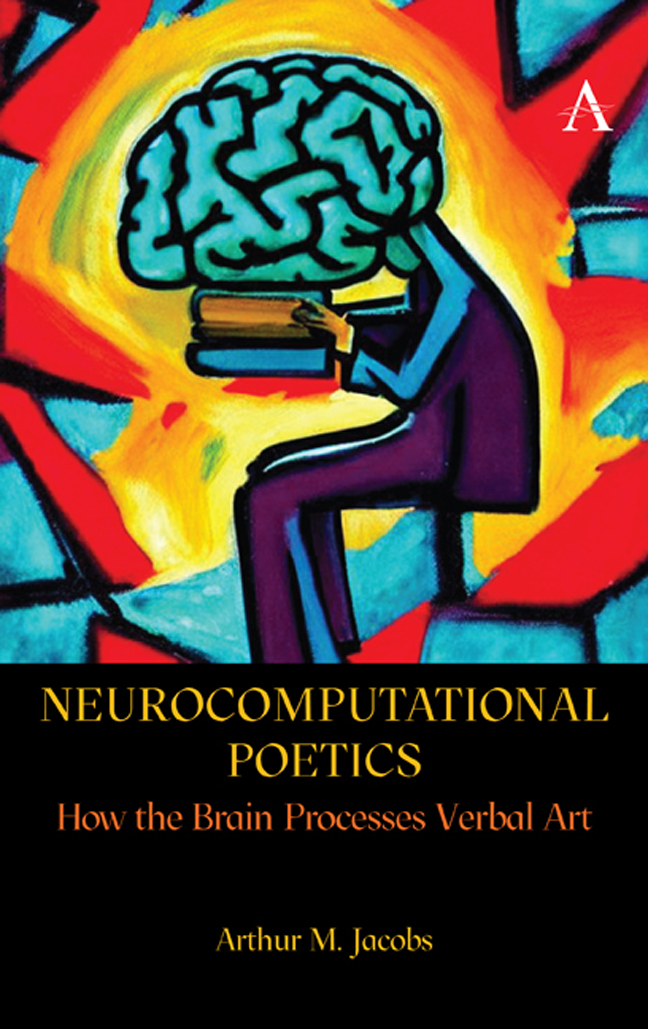Book contents
- Frontmatter
- Contents
- Acknowledgements
- Dedication
- Preface
- 1 Introduction: The Two Boons of an Unnatural Daily Activity
- 2 Models and Methods
- 3 Text Analysis
- 4 Reader and Reading Act Analysis
- 5 Computational Poetics I: Simple Applications
- 6 Computational Poetics II: Sophisticated Applications
- 7 Neurocomputational Poetics I: Upper Route Studies
- 8 Neurocomputational Poetics II: Lower Route Studies
- 9 Conclusions
- References
- Index
9 - Conclusions
Published online by Cambridge University Press: 01 March 2024
- Frontmatter
- Contents
- Acknowledgements
- Dedication
- Preface
- 1 Introduction: The Two Boons of an Unnatural Daily Activity
- 2 Models and Methods
- 3 Text Analysis
- 4 Reader and Reading Act Analysis
- 5 Computational Poetics I: Simple Applications
- 6 Computational Poetics II: Sophisticated Applications
- 7 Neurocomputational Poetics I: Upper Route Studies
- 8 Neurocomputational Poetics II: Lower Route Studies
- 9 Conclusions
- References
- Index
Summary
This book started with the central claim of the NCPM that typically prose and poetry texts are processed by partially separable neuronal circuits that underlie different mental operations of implicit vs. explicit processing and lead to distinct experiences of immersion vs. aesthetic feelings, as well as different observable behaviours, such as shorter vs. longer gaze durations. In reality, there can be cases where this necessary simplification that enormously facilitates formal modelling and empirical investigation does not apply, but the majority of empirical data discussed in this book suggest its validity. Let me recap how verbal art reception functions according to the NCPM and point out its limitations.
Literary Reading According to the NCPM
To sum up the large model section of Chapter 2 in a nutshell, an individual act of literary reading could proceed like this: Influenced by the significative network, cultural norms (the codes in the metamodel) will bias the reader's inclination to start the reading act, as will multiple previous reading episodes that left their traces in the readers’ semantic memory, her momentary mood and time budget, more permanent personality traits or the availability and richness of appropriate reading materials (an analogue or digital library). All this might contribute to creating (or not) a longing for the pleasures of ludic reading which can be biased in two directions. Either in favour of immersing oneself for longer periods of time (typically hours to days, with breaks in between) in enthralling text worlds inhabited by interesting characters entangled in suspenseful plots that activate the brain's affect and empathy networks and evoke emotions like joy, fear, hope, sympathy or anger. Although a minority, some personalities also might long for diving into conflicting inner monologues and rich inner life descriptions of his/her favourite character. Still others may favor more artful texts where suspenseful events are mingled with the occasional rhetorical device, most likely metaphor, hyperbole and idioms (cf. Chapter 5). Alternatively, the reader may be biased in the other direction and fancy some shorter ‘reading through the ear’ episodes (typically minutes to hours) due to a longing for rhythm and rhyme, amazing metaphors and puzzling figurative meaning in general, crazy syntax, multi-layered polysemy, feelings of interest, fascination, being moved, concernedness or extended (self-)reflective moments.
- Type
- Chapter
- Information
- Neurocomputational PoeticsHow the Brain Processes Verbal Art, pp. 233 - 236Publisher: Anthem PressPrint publication year: 2023



